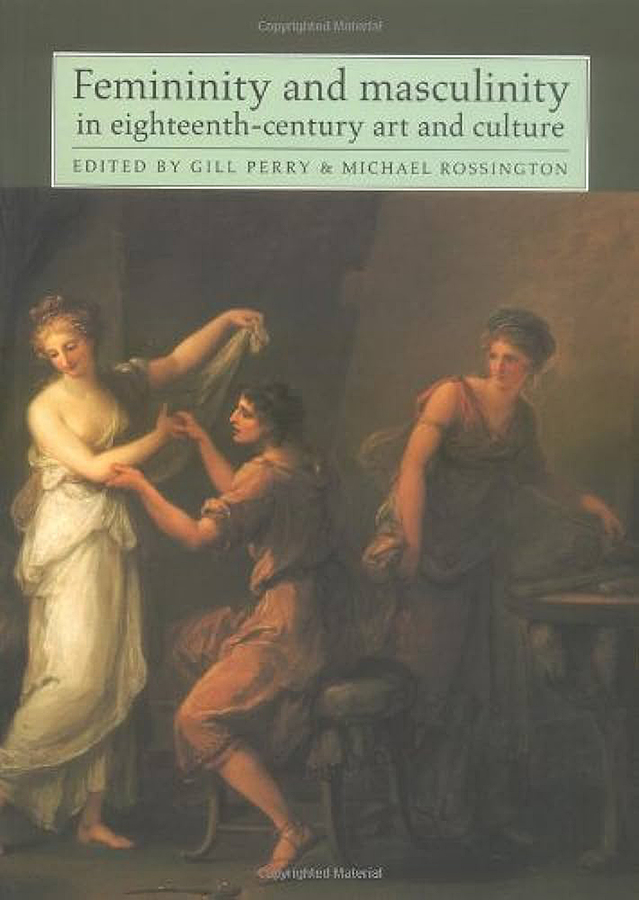
Femininity and Masculinity in Eighteenth-Century Art and Culture
Ed. and co-author, (Manchester University Press, 1994), pp. 1-17, 18-40.
Focussing on the visual arts and written texts, this edited collection emerged from an inter-disciplinary collaboration between Gill Perry and Michael Rossington. The idea for the collection emerged from the over-lapping research interests of individuals working on the Open University’s second level course The Enlightenment (code A206; first published 1993).
Through detailed discussion of written and visual texts, the editors and contributors sought to explore the shifting and nuanced uses of concepts of ‘femininity’ and ‘masculinity’ within 18th-century culture and the different ways in which they informed and influenced artistic practices. Varied methodological approaches are adopted, but overall these studies should encourage us to see that despite the dominance of certain tropes, notions of ‘feminine;’ and ‘masculine’ virtues and values were shifting and contested during the period. Perry’s essay ‘Women in Disguise’ explores portraiture as a powerful medium for the communication of social and cultural ambitions, values, beliefs and gendered assumptions, arguing for the increasing instability of the portrait genre during the later 18th century, and the crucial role played by the medium in contemporary definitions of femininity.